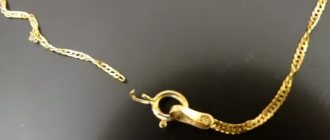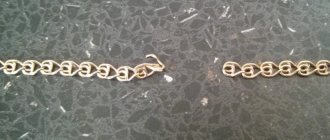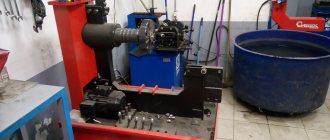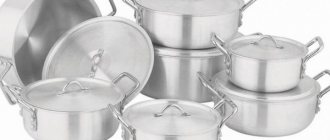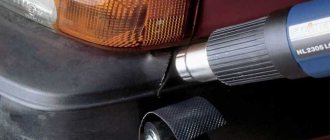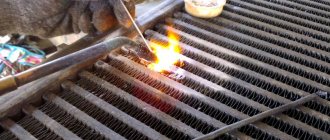Metal utensils in the kitchen
Despite the fact that many housewives have long been using pots and pans made of fireproof glass or ceramics, metal cookware is still extremely popular. She has many advantages:
- heats up quickly:
- cools down quickly;
- tolerates temperature changes well;
- it is easy to care for;
- costs much less than analogues made from other materials.
True, metal pans also have disadvantages - in particular, not all of them can be repaired. Utensils are mainly used from the following materials:
- of stainless steel;
- aluminum;
- steel coated with enamel.
Important! Cast iron cookware is still used to prepare some dishes; it retains heat better and distributes it evenly. Read about what and how to cook in such dishes in our culinary blogs:
- What's better to cook in a cast iron frying pan?
- How to cook meat deliciously.
- How to cook oyster mushrooms.
- Caring for cast iron cookware. Rust which is a problem.
But, unfortunately, cast iron cookware most often cannot be repaired. But you can try to put the rest in order.
The enamel on the pan has chipped: can it be used for food and recommendations for repair
Pots are favorite items in the kitchen that housewives cannot do without. They treat utensils differently, and they can be varied. Over the years, enamel pots lose their former beauty and sometimes become deformed. In some places the enamel is chipped. We'll tell you in the article what to do with such dishes - throw them away or restore them yourself.
How to close it?
If a hole appears on an aluminum, steel or enamel surface, you can do one of the following:
- plug the hole with a bolt;
- solder;
- make a rivet;
- seal;
- brew.
Important! The first method, as well as riveting, is suitable for any material. But not everything can be soldered - for example, the steel must first be annealed, but the method is extremely unreliable. The best option is to brew it if you have the equipment.
Install the bolt
This method has a significant drawback - the enamel cannot be restored in this way. Just the opposite - it will gradually peel off. So this option can be regarded as temporary. If you urgently need to repair a small hole in the bottom and absolutely don’t care what happens to the pan later, you can’t think of a better way. The enamel can then be restored.
How to repair an enamel pan? Very simple. You need:
- bolt of suitable size;
- drill;
- metal drill.
The hole is rarely exactly the right shape. Therefore, first of all, it needs to be brought into relative order:
- Take a 3 mm drill (if you have a 2 mm bolt, then you need the same drill).
- Drill the hole, giving it the most correct shape possible.
- Insert the bolt.
- Tighten the nut firmly from the inside.
Important! It’s hardly worth cooking in such a pan, but you can boil the water for a long time - as well as use it for other purposes (for example, if it is steel or enameled, you can paint things in it, boil laundry, etc.).
Rules for using enamel cookware
Even with successful restoration of the coating, the service life of the pan is still reduced. It cannot be exposed to high temperatures for a long time, and after cooking the food will have to be poured into another container. Therefore, it is better to follow the operating standards for new enamel kitchen utensils in advance:
- do not place an empty pan on the stove or expose it to heat without food;
- immediately after purchase, heat the product with a saline solution (2 tablespoons of salt per liter of water) until the liquid boils - this will help “harden” it;
- avoid temperature changes, do not pour cold water into a heated pan;
- use only wooden, silicone, Teflon spoons, whisks, stirrers, spatulas;
- drain the water from the pan, remove the cooked food only after it has cooled for some time;
- do not allow shocks, falls, or other mechanical factors to affect the utensils;
- do not cook too viscous dishes that often burn in an enamel pan, do not boil milk;
- prevent the cereal from sticking to the bottom by stirring it immediately after falling asleep;
- do not place a large pan on a small stove - the size of the product must exactly correspond to the heating zone;
- Do not clean the pan with products based on alkalis or acids, and do not allow dishes with vinegar to remain in it for a long time.
Brazing Solder
Repairing pans using a bolt is the simplest method, but it is not suitable for every case. For example, it is unlikely that it will be possible to repair a curved surface this way. In this case, you will have to solder, and you need to use hard solder - that is, do the same as tinkers used to repair metal utensils on the streets and markets.
You need:
- tin plate;
- tin solder;
- flux;
- sandpaper;
- file;
- high power soldering iron.
Tinned sheet metal is used to make AA battery cases - from there you can take it and use it in this way:
- Sand the area around the hole until the enamel is completely removed and only bare metal is left.
- Apply flux.
- Tin the damaged area with a soldering iron using hard solder.
- Cut out a patch from tin.
- Tin it in the same way.
- Apply a patch to the hole.
- Warm it up with a soldering iron.
- Wait for the solder to melt.
- Press the patch onto the outside of the pan.
- Remove excess solder - this is done with a file.
Solder must be applied in a thick layer - no less than 5 mm. With such a repair, the patch will not fall off for quite a long time. You can cook in a saucepan, but not too often.
Important! Lead is toxic, so if you plan to cook in a pan in the future, use pure tin as solder.
Can I use a pan with chipped or damaged enamel?
I don’t know about you, but I’ve always believed that soup cooked in a nice saucepan, and even in a clean and modern kitchen, tastes better. Today I walked through the crockery aisles at the market... I saw so much beauty, and it was relatively inexpensive! I was going to buy a set of enamel saucepans (manufactured by Kerch) for my mother’s birthday, and while I was shopping, I wanted to please myself with a new saucepan.
Before buying new clothes, we convince ourselves that ours are already outdated, small, and out of fashion. Let's try to do the same for kitchen utensils. I invite readers to go to the kitchen and inspect their pots, bowls, and kettles.
So, the first and most common damage to enamel pans is erased, damaged enamel . Such damage to the enamel occurs on the pots of those housewives who clean their dishes with metal and abrasive sponges. The inside of the pan ceases to be shiny and snow-white, but this state does not in any way affect the dishes cooked in it and does not harm human health.
You may also find places on your pans where the enamel has chipped off and metal is visible. Enamel comes off easily from kitchen utensils. And, as a rule, if it starts to fight back, it will continue to crumble in this place. If such damage is on the outside or at the top, where the surface of the pan is not in direct contact with the dish, you can safely continue cooking in that pan.
Restoring enamel
How to repair an enamel pan if there is no hole, but the enamel has chipped? We need to restore the enamel. To do this you will need putty, which you can make yourself. You need:
- kaolin – 225 g;
- trephine – 60 g;
- calcined borax – 40 g;
- sodium silicate – 30 g;
- powder glass – 20 g;
- slaked lime – 20 g;
- water – 10 ml;
- capacity;
- mortar and pestle:
- pharmacy scales.
All ingredients can be purchased at chemical stores, but it is easier to do this through an online store. Grind the ingredients thoroughly and mix. Then follow this procedure:
- Clean the surface and dry it.
- Degrease the area where you will apply the putty.
- Apply putty.
- Let it dry for two days.
Quartz sand enamel
There is another type of homemade enamel. For it you will need:
- casein;
- sodium liquid glass;
- borax;
- quartz flour;
- crushed glass.
Here's what needs to be done with all this so that the repair of an enamel pan gives the expected result:
- Combine 12 parts casein, 6 parts liquid glass, 10 parts borax, 14 parts quartz flour and 5 grated glass.
- Mix everything well, add a little water to make a homogeneous dough.
- Prepare the enameled surface in the same way as in the previous case, that is, strip it down to the metal and wipe it with acetone or gasoline, and then dry it.
- Apply the composition you prepared, rub and let dry.
- Then sand it smooth and nice, and you can use it.
The procedure for updating the enamel layer
The easiest way to carry out restoration work on a pan is to use enamel paint from an aerosol can.
To do this, purchase “BATH ENAMEL” or “NITRO ENAMEL” in the desired tone (usually white), clean the damaged area, wash thoroughly with laundry soap and leave to dry.
Next, apply the enamel directly to the problem area. Alas, this can only be done with the outer part of the container, since the food should not come into contact with the paint.
Alternatively, use a soldering iron. In addition to this device, you need to use pure tin (solder) and flux.
The procedure for preparing an area for restoration is classic - cleaning with a sanding sheet, thoroughly washing, treating with a degreaser and drying.
To separate the solder, a hot soldering iron is used and applied to the end of the fixture.
The chipped area is treated with flux and solder using back and forth movements. These actions must be carried out until all microcracks are completely sealed with tin.
If there are large distortions, you can hide them with a special putty.
To do it, you will need:
- kaolin (white clay) – two hundred and twenty grams;
- calcined borax - fifty grams;
- slaked lime - twenty-five grams;
- powder glass - thirty grams;
- powdered sodium silicate - twenty-five grams.
All these components are poured into a mortar, crushed there, stirred and diluted with liquid until a homogeneous viscous mixture is formed.
The chipped area is cleaned with a sanding sheet, treated with a degreaser, puttied and left to dry for two days.
After this, the pan is sanded to perfect evenness.
We offer another option for putty. For this you will need:
- slaked lime (four servings);
- ground quartz (fifteen servings);
- white clay (fifty servings);
- casein (thirteen servings);
- sodium silicate (six servings);
- crushed glass (five servings);
- soda ash (ten servings).
The principle of preparing and applying the mass to the “sick” area of the pan is identical. The consistency should resemble liquid dough in order to restore the product.
The putty takes about two days to dry, and it becomes resistant to water and heat.
Once restored, such utensils can be used for a couple of weeks, and with good care – for two to three months.
Remember that enamel utensils are beneficial only if used carefully.
With it, the food turns out very tasty, and it also adds some zest to the appearance of the kitchen, so any housewife should definitely have it on hand.
Big hole
But what should you do if a large hole has formed in your favorite saucepan, for which there is simply not enough tin from the battery? You will need a piece of copper, that is, a copper plate. Also very useful:
- needle file;
- file;
- sandpaper;
- gasoline or acetone;
- soldering iron;
- tin;
- rosin;
- flux.
Before applying the patch, everything needs to be carefully prepared:
- Wash the pan thoroughly.
- Clean the damaged area from all deposits and rust, if any.
- Clean the plate too until it shines.
- Wipe both surfaces with acetone, gasoline, and white spirit.
- Apply flux or treat the surface with soldering fluid (available at any hardware store).
- Warm up your soldering iron.
- Place the sting in rosin.
- When a light smoke appears, you can start.
- Pick up solder - you need to hold the tip until a film appears.
- Apply solder to the repair area.
- Level it from the outside and inside of the pan.
- Gradually apply pieces of solder and smooth out until the hole disappears.
How to prepare a soldering iron?
If you have already dealt with a soldering iron, repairing a pan will not seem difficult to you. For those who have decided to do this for the first time in their life, it makes sense to first prepare a soldering iron. It needs to be tinned:
- Clean the tip - this can be done either with sandpaper or a file.
- Warm up the device by plugging it in.
- Rub the tip over the piece of rosin.
- Separate a little solder with the heated tip.
- Making circular movements, ensure that the tin spreads evenly over the entire tip - the end should be coated on both sides.
- If you don’t get an even layer, repeat the procedure, but try to clean the tip as best as possible.
Important! If you notice a blue film on the prepared soldering iron, it needs to be cooled.
Can it be used?
You can use the pan, but not right away. It must first be prepared. This is done like this:
- Wait for the solder to cool.
- Clean the soldering area so that the patch does not stand out too much.
- After this, you can try to boil the water - if you did everything correctly, the pan will not leak.
Important! Well, the utensils are saved, it’s time to check whether milk will flow out of it. By the way, if you still don’t know in which pan it is better to cook milk, we will tell you in our article: “In which pan is it better to cook milk porridge.”
Why can’t I use a pan with chipped or damaged enamel?
Why can’t I use a pan with chipped or damaged enamel?
It's all nonsense. Can.
This “duck,” in my deep conviction, was launched by the manufacturers of enamel cookware themselves, so that you and I, at the first scratch on an enamel pan, would throw it away and run to the store for a new one.
As a result of the chip, a small area of metal is exposed, which is completely harmless to the products. The worst thing that can happen there is corrosion. Before use, wipe the pan and the area where the enamel is chipped with a cloth. And when something is poured into a pan and is being cooked, corrosion is impossible at that moment - there is no contact with air.
You will have to throw away such a pan only when the metal at the chip site rusts through and a hole forms in the pan. However, even after a hole has formed, such dishes can be used, for example, for storing solid and even fairly coarse-grained bulk products.
Why can’t I use a pan with chipped or damaged enamel?
Eating food from such dishes can cause poisoning of the body with heavy metals. And in an acidic environment (soups), they increase. With constant use of such dishes, these metals will accumulate in the body, which can lead to headaches, weak immunity and general fatigue.
It is better to use stainless steel cookware with thick walls
Why can’t I use a pan with chipped or damaged enamel?
Chemically, enamel is glass, i.e. it is neutral to all aggressive substances, including acid (for example, tomatoes, etc.) and alkali. Remember in chemistry lessons everything was done in glass flasks and cylinders. That's why such pans appeared. And now it is fashion again, they are returning to this type of coating for pans with glass-ceramic coating. The enamel usually chips where we knock on it or overheat.. So if you have a chip on top, where the liquids do not touch, please prepare for your health. The only way out is to use a pan, pouring the liquid halfway, so that it is difficult to get the liquid to the boiling point until it cracks.
Or you will still have to go broke and buy a new pot or frying pan. It is better, of course, to use enamel cookware carefully. This is medium heat, do not leave empty dishes on the fire and of course do not knock or wash with steel wool that scratches the enamel surface. All metals that are under the enamel have a bad effect on our body. the manufacturer covered the metal with enamel and can make it from any metal that will cost him the least.
Why can’t I use a pan with chipped or damaged enamel?
You can use it. But, if the enamel is damaged, it is believed that the iron under the enamel is oxidized and gets into the food. I don’t think so myself - not that much iron gets into food at one time, even if you cook sour soup. And if it does, it’s excreted along with the feces, but doesn’t get into the blood. But the fact that such dishes deteriorate much faster than chemically neutral containers, such as stainless steel or aluminum, is for sure. After all, enamel is supposed to protect, and if it is not there, then the broken area becomes thinner and eventually becomes full of holes. This shortens the life of the saucepan. Instead of 100 years, it lasts only 5 years after the moment it was damaged.
You can use dishes with broken enamel if the saucepan is good. If the saucepan is bad, it is better to buy a good one.
Why can’t I use a pan with chipped or damaged enamel? Yeah, exactly the same - “broken” and “damaged”.
All housewives who wash them with an abrasive or steel wool have damaged enamel on pots. Promotes burning of food. You can use it in the same way as a new one, it doesn’t affect anything else.
Chipped enamel (damage with complete removal of enamel in some area with exposure of metal) is no longer recommended with modern pans. Indeed, as already written, if a manufacturer has enamel-coated metal, he will not use food-grade certified metal, and oxides can affect the taste and quality of food. After all, the acids and salt in the soup will react with the metal. This is especially fraught in the case of cheap Chinese pans. But there are many things that we do that are not recommended. For example :), if a person drinks, smokes, eats all sorts of nasty things from McDonald's, then it seems to me a little inappropriate for him to care about such subtleties). By the way, if the pan is old, Soviet, then the metal is of better quality, and you can ignore the chips.
Repairing an aluminum pan
The situation is much more complicated with aluminum surfaces. Soldering them is very difficult. Of course, if you have argon welding (and such a device can now be bought completely freely) - there are no problems. But it only makes sense to buy such expensive equipment if you are going to do this all the time - it’s definitely not worth doing this just for one aluminum pan.
Is it necessary to throw away a damaged pan? Not at all. It can be used for a variety of purposes - for example, it is quite suitable in the garden. You can use it to collect fruits and vegetables, as well as carry water for irrigation. For repair you need:
- piece of aluminum;
- bolt with nut;
- drill;
- hacksaw for metal.
You need to make two patches from aluminum. They must be larger than the hole:
- Apply patches to the hole from the outside and inside.
- Fasten them with one or more bolts - the nuts should be on the inside.
Important! A steel pan can be repaired in any way - both soldering and patching.
Sealing an aluminum pan
Aluminum is difficult to solder due to the rapid formation of an oxide film. In addition, you will need a very powerful soldering iron - 100 W or more. There are difficulties with solder - bismuth is added to it, and it is not as easy to get as other metals.
Solder consists of two components:
- tin – 80-95%;
- bismuth – 5-20%.
Important! It should be kept in mind that bismuth is toxic. It’s hardly worth cooking food in such a pan, but it can be used for other purposes.
The following is used as flux:
- paraffin;
- stearin.
To avoid the appearance of an oxide film, you can try the following method:
- Clean the surface where the hole is located.
- Melt the rosin.
- Fill the hole with melt
- Apply flux.
- Apply solder to the tip and seal the hole from the edges to the middle.
How to use enamel cookware correctly
If you just bought a set of saucepans, it is better to take preventive measures so that your household utensils last longer. Before using the container, the enamel is strengthened.
They do this:
- pour water into the pan;
- add salt at the rate of two tablespoons per liter of water;
- bring the solution to a boil;
- Remove the pan from the heat and let the water cool.
Thanks to this procedure, the strength of the enamel increases. However, try not to drop the product or knock with the spoon. The coating is very fragile and often breaks off. Its main purpose is to prevent rust on metal bases.
Enameled cookware that is chipped is not suitable for use. She becomes harmful. It is better to replace the container or try to repair it.
Do not pour cold water into an already heated pan. Due to temperature changes, cracks appear on the sensitive surface. The same applies to freezing. In an enamel bowl, water is not frozen, which expands under the influence of low temperatures and negatively affects the quality of the surface.
Cleaning aluminum and steel cookware after repair
If you need to restore the appearance of aluminum cookware, simply clean it. The most common soda is suitable for this. Clean the pan and it will regain its former beauty.
Important! Every housewife knows how easily aluminum pans get dirty and smoke. But not everyone knows how to return kitchen utensils to their former appearance. Our blogs will help you understand this issue:
- How to clean aluminum pans at home.
- Aluminum is harmful to health.
- Cleaning stainless steel cookware.
- The best stainless steel pans rating.
In the same way, the spectacular appearance of stainless steel products is restored. In this case, you don’t even need soda - any dishwashing detergent is enough.
Is it possible to use cookware with damaged enamel?
Most often, areas with worn enamel are found on pots by housewives who wash dishes with abrasives or hard metal sponges. Also, a piece of enamel can break off if the product is hit or dropped. In this case, the coating will continue to crumble, causing the damaged area to grow in size.
If the problem is on the outside of the pan, you can continue cooking in it without hesitation. But the presence of internal defects will be fraught with a number of troubles:
- rapid rusting of the area, penetration of rust into food;
- the formation of harmful oxides and other compounds upon contact with organic acids from plant foods;
- acceleration of the formation of chemicals when the pan is heated;
- the appearance of an unpleasant taste in dishes;
- accidental swallowing of a piece of enamel.
If the pan was initially of poor quality, its base may well contain heavy metals and other harmful impurities.
Enamel reliably protects food from penetration, but its absence even in a small area can lead to serious consequences. Damaged pots can only be used for washing vegetables and fruits, but you cannot cook in them!
other methods
In some cases, it is better not to solder metal surfaces, but to glue them together. True, you won’t be able to cook food in sealed pans; this will only work as a bucket. But just in case, you need to know these methods. Adhesives suitable for you:
- BF-2;
- BF-4;
- epoxy.
BF-2 and BF-4
These adhesives are made from phenol-formaldehyde resin, so cookware repaired with their help is not suitable for cooking. The method of application is simple:
- Clean surfaces thoroughly to ensure no grease, rust or dirt remains.
- Treat the gluing area and patch with acetone or gasoline.
- Apply a thin layer of glue - it is more convenient to do this with a brush.
- Allow the item to dry for about an hour.
- Apply a second layer of glue.
- Let it dry a little.
- Place the surfaces against each other (for example, a metal plate to a hole), press.
- Place the product in the oven and heat for an hour.
Epoxy adhesive
This solution consists of several components. He has:
- epoxy resin;
- dibutyl phthalate (plasticizer);
- aluminum oxide or quartz flour;
- hardener
After the patch is glued, the product must be placed in the oven, preheated to 200°C and heated for about three hours. This is the best variant. If you don’t have an oven, you can preheat it to 120°, and then leave the pan alone for a day, after which it will be ready for use. You can store food in it, but you shouldn’t cook it.
Why damaged enamel cookware is harmful and how to restore it
If you treat enamel dishes with care, they will serve you for centuries.
But it happens that over time, various defects appear on it in the form of chips, cracks, abrasions due to improper use or due to mechanical stress.
Naturally, each of you is wondering, is it really possible to restore the enamel layer on your favorite pan?
There are flaws that can easily be eliminated with your own hands, so do not rush to throw enamel utensils in the trash.
Rivet
If you don’t have glue on hand, but you have a lot of metal working tools in your house, you can make a rivet. You need:
- a good hammer (it should fit tightly on the handle);
- hacksaw;
- chisel;
- pliers;
- vice;
- wire cutters;
- anvil;
- metal plate;
- thick wire - copper or aluminum.
The procedure for repairing a pan:
- Cut a piece of wire 10-12 cm.
- Clamp it in a vice.
- Using light blows of a hammer, flatten one end to form a cap - it should be larger than the hole.
- Insert the free end of the wire into the hole so that the cap covers it.
- Trim the free end.
- Flatten it so that the other side also has a cap covering the hole.

